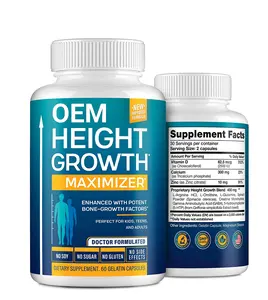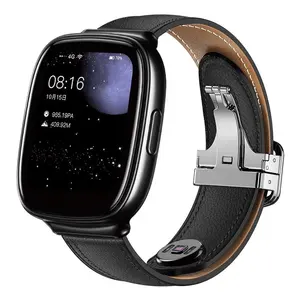Phổ biến trong ngành của bạn

3 tấn nhiệm vụ ánh sáng người phá hủy cơ thể mini Tow Truck
5.200,00 US$ - 5.600,00 US$
Đơn hàng tối thiểu: 1 Đơn vị
Vận chuyển mỗi chiếc: 2.560,00 US$


Tow Xe Tải 10 Tấn RC Người Phá Hủy 3 Tấn 5ton 8ton Thấp Giường Người Phá Hủy Sử Dụng Người Phá Hủy Chiếc Xe Tải Kéo Cho Bán
23.000,00 US$ - 33.000,00 US$
Đơn hàng tối thiểu: 1 Đơn vị


20 tấn 25 tấn Máy kéo có thể tháo rời người phá hủy cơ thể DTU có thể tháo rời Tow đơn vị
21.000,00 US$ - 35.000,00 US$
Đơn hàng tối thiểu: 1 Đơn vị
Vận chuyển mỗi chiếc: 3.040,00 US$


Một Kéo Hai Kéo Giường Xe Tải 5T 8T 10T Nghiêng Khay Tow Xe Tải Cho Đường Tai Nạn Cứu Hộ
11.000,00 US$ - 13.000,00 US$
Đơn hàng tối thiểu: 1 Đơn vị


Cần Cẩu Thủy Lực 1 ~ 8 ~ 25 Tấn Có Thể Tùy Chỉnh Bán Chạy Cần Cẩu Gắn Xe Tải Dạng Ống Lồng Cần Cẩu Mini Để Bán
2.998,00 US$ - 11.500,00 US$
Đơn hàng tối thiểu: 1 Bộ


Tiêu Chuẩn Châu Âu Tùy Chỉnh 6X4 30 Tấn Cần Cẩu 25 Tấn Trở Lại Kéo Bùng Nổ Tow Xe Tải Giường Người Phá Hủy Cơ Thể Cho bán Hàng
27.500,00 US$
Đơn hàng tối thiểu: 1 Cái

Keeyak foton phẳng phá hủy kéo xe tải 4x2 nghiêng khay với 8 tấn bùng nổ cần cẩu sgs200 tời thủy lực
44.500,00 US$
Đơn hàng tối thiểu: 1 Cái

Cần Trục Tay Trái FAW 4X2 Xe Tải Kéo Phẳng Với Cần Cẩu Cần Trục Gấp Gọn 8 Tấn Xe Tải Kéo Phá Hủy Bán
35.300,00 US$
Đơn hàng tối thiểu: 1 Đơn vị

Dongfeng 4X2 Người Phá Hủy Xe Tải Kéo Kết Nối Với Cần Cẩu Bùng Nổ
20.000,00 US$
Đơn hàng tối thiểu: 1 Bộ

New Thủy Lực Kính Thiên Văn Bùng Nổ Cần Cẩu 7 Tấn Người Phá Hủy Kéo Xe Tàu Sân Bay Nâng 5ton Tow Xe Tải Nhật Bản Với Cần Cẩu
16.000,00 US$ - 28.500,00 US$
Đơn hàng tối thiểu: 1 Đơn vị

Siêu Tháng Chín XDR nhật bản phẳng tow xe tải người phá hủy bùng nổ cần cẩu xe tải
18.000,00 US$ - 25.000,00 US$
Đơn hàng tối thiểu: 1 Đơn vị

Xe Tải Kéo Phá Hủy Phẳng Cứu Hộ Đường Bộ HOWO 116hp Loại Nhẹ Có Cần Cẩu Bùng Nổ Đốt Ngón Tay
19.999,00 US$ - 30.999,00 US$
Đơn hàng tối thiểu: 1 Đơn vị
Các tìm kiếm liên quan:
người phá hủy kéo xe tải với cần cẩuxe tải phá hủy với cần cẩuclw crane người phá hủy kéo xe tảixe tải phá hủy 30 tấnsử dụng xe tải phá hủy 20 tấnxe tải kéo phá hủy minixe tải phá hủy 5 tấnxe tải phá hủy 10 tấnxe tải phá hủy giường phẳngxe tải phá hủy 25 tấnngười phá hủy kéo cần cẩu xe tảixe tải phá hủy sinotrukisuzu xe tải kéo xe tảixe tải phá hủy cần cẩuxe tải kéo phá hủy 20 tấn

Tùy chỉnh HOWO 50 tấn 60 tấn 70 tấn rotator kéo xe tải phá hủy thủy lực nâng cần cẩu và kéo bùng nổ cho cứu hộ công việc
14.800,00 US$ - 15.000,00 US$
Đơn hàng tối thiểu: 1 Đơn vị

HOHAN 4X2 Tow Tải 16 Tấn Phục Hồi Xe Tải Khẩn Cấp Cứu Hộ Phẳng Người Phá Hủy Nền Tảng Kéo Cẩu Xe Tải Với Telescopic Boom
40.800,00 US$ - 44.880,00 US$
Đơn hàng tối thiểu: 1 Bộ
Vận chuyển mỗi chiếc: 12.000,00 US$

Dongfeng Xe Tải Kéo 4X2 Với Cần Cẩu Xe Tải Thủy Lực 8 Tấn Cần Cẩu Bùng Nổ Đốt Ngón Tay Người Phá Hủy Lật Phẳng
32.000,00 US$ - 40.000,00 US$
Đơn hàng tối thiểu: 1 Đơn vị
Vận chuyển mỗi chiếc: 26.827,00 US$

Sinotruk HOWO 40 tấn khay kéo xe tải dưới bánh xe nâng đường phá hủy Xe tải kéo với cần cẩu 30 tấn tời
25.800,00 US$
Đơn hàng tối thiểu: 1 Đơn vị

4 tấn nhiệm vụ nặng nề CuộN trở lại Xe tải kéo với Cần Cẩu kéo xe tải phục hồi xe tải với xoay bùng nổ
18.000,00 US$ - 20.000,00 US$
Đơn hàng tối thiểu: 1 Đơn vị

Nhà máy cung cấp Nhật Bản ISUZU 10ton phẳng kéo người phá hủy loại thẳng bùng nổ cần cẩu xe tải
1.199,00 US$ - 1.399,00 US$
Đơn hàng tối thiểu: 1 Bộ

Dongfeng Xe Tải Phá Hủy Trục Lăn Xe Tải Kéo Phẳng Với Cần Cẩu Ống Lồng 3 Tấn
14.260,00 US$
Đơn hàng tối thiểu: 1 Đơn vị

New 6x2 thủy lực phẳng kéo xe tải với cần cẩu 22ton 12ton 16ton Boom Crane wrecker Tow Truck On Sale
39.500,00 US$ - 39.800,00 US$
Đơn hàng tối thiểu: 1 Đơn vị

Xe Tải Phá Hủy Kéo Bùng Nổ Tích Hợp 20 Tấn 25 Tấn Howo Bán Tại Nhà Máy Có Cần Cẩu
23.000,00 US$ - 25.000,00 US$
Đơn hàng tối thiểu: 1 Đơn vị

Sản xuất tại Trung Quốc shacman 6x4 10 tấn gấp cần cẩu xe tải phẳng kéo xe tải với sự bùng nổ cần cẩu
33.000,00 US$ - 34.000,00 US$
Đơn hàng tối thiểu: 5 Bộ

Xe Tải Phục Hồi Sự Cố Theo Yêu Cầu Có Cần Cẩu Xe Kéo Phá Hủy 4 Tấn Xe Kéo Bán Hàng
30.000,00 US$
Đơn hàng tối thiểu: 1 Cái
Vận chuyển mỗi chiếc: 5.000,00 US$

Dongfeng 4x2 5 tấn phẳng kéo xe tải phá hủy với cần cẩu thủy lực bùng nổ
18.600,00 US$ - 24.300,00 US$
Đơn hàng tối thiểu: 1 Đơn vị

HOWO thương hiệu kéo xe tải 10 tấn giường phẳng phá hủy Xe tải kéo thiết bị 8 tấn thẳng bùng nổ cần cẩu
34.100,00 US$ - 36.500,00 US$
Đơn hàng tối thiểu: 1 Bộ

Nhiệm vụ nặng nề sinotruk HOWO 8x4 rhd kéo xe tải 50 tấn rotator cần cẩu bùng nổ người phá hủy xe tải
24.000,00 US$ - 35.000,00 US$
Đơn hàng tối thiểu: 1 Đơn vị
Vận chuyển mỗi chiếc: 157,49 US$

Dongfeng 4*2 5 tons 8ton 10ton 15ton người phá hủy xe tải phẳng kéo xe tải đường người phá hủy xe tải với Knuckle bùng nổ cần cẩu để bán
5.000,00 US$ - 5.980,00 US$
Đơn hàng tối thiểu: 1 Đơn vị

Dongfeng Xe Tải Kéo Cứu Hộ 4 Tấn Xe Kéo Cứu Hộ Xe Tải Phá Hủy Phẳng Bùng Nổ Kính Thiên Văn Có Cần Cẩu Ở Thái Lan
10.000,00 US$ - 11.000,00 US$
Đơn hàng tối thiểu: 1 Mẫu Anh
Vận chuyển mỗi chiếc: 34.998.000,00 US$

Xe tải kéo phẳng với Boom 5t 6.3t dongfeng mới một kéo hai tai nạn xe tải phá hủy xe tải gắn người phá hủy cơ thể rollback
19.898,00 US$ - 22.198,00 US$
Đơn hàng tối thiểu: 1 Đơn vị

Tàu điện ngầm kéo xe tải FB-15 sự cố phục hồi phẳng đường phá hủy kéo xe tải towtrucks với cần cẩu bùng nổ xe tải 5 tấn
32.500,00 US$ - 33.000,00 US$
Đơn hàng tối thiểu: 1 Đơn vị

Xe tải kéo tích hợp thiết bị phục hồi người phá hủy với cần cẩu
6.000,00 US$
Đơn hàng tối thiểu: 1 Đơn vị

OEM 50 tấn 60 tấn 70 tấn kéo xe tải phá hủy với rotator thủy lực nâng cần cẩu và kéo bùng nổ cho cứu hộ công việc tùy chỉnh
8.245,00 US$ - 9.472,50 US$
Đơn hàng tối thiểu: 1 Đơn vị

Hiệu suất cao nặng đường cứu hộ người phá hủy kéo xe tải 50 tấn 70 tấn với rotator bùng nổ cho doanh số bán hàng
76.000,00 US$ - 78.000,00 US$
Đơn hàng tối thiểu: 1 Đơn vị
Vận chuyển mỗi chiếc: 230.200,00 US$

4x2 8x4 8 tấn thủy lực Knuckle bùng nổ cần cẩu rollback phẳng Tow loader wrecker Tow Truck
33.500,00 US$ - 33.900,00 US$
Đơn hàng tối thiểu: 1 Đơn vị

Đa Chức Năng Nặng Người Phá Hủy Khay Tow Xe Tải Cài Đặt 4 Tấn Cẩu
35.000,00 US$ - 45.000,00 US$
Đơn hàng tối thiểu: 1 Đơn vị

Euro 4 Tiêu Chuẩn Khí Thải 25 Tấn Sinotruck Howo Phục Hồi Xe Tải Phá Hủy Tow Truck Phẳng Cẩu Nâng Cáp Treo
17.000,00 US$ - 22.800,00 US$
Đơn hàng tối thiểu: 1 Bộ

Nhà sản xuất 20t rotator Tow xe tải cơ thể phục hồi người phá hủy cánh tay phá hủy cần cẩu bùng nổ trong kho
6.600,00 US$
Đơn hàng tối thiểu: 1 Đơn vị

Sử dụng isuzui3 tấn 5 tấn 4x2 giường phẳng máy xúc phá hủy Xe tải kéo xe tải 2016 năm
11.000,00 US$ - 12.000,00 US$
Đơn hàng tối thiểu: 1 Cái

Foton 4x2 3ton phẳng kéo xe tải với cần cẩu cho xe cứu hộ kéo xe tải mới ISUZU phẳng kéo xe tải để bán
14.500,00 US$
Đơn hàng tối thiểu: 1 Đơn vị

Dongfeng kingrun 10 tấn phẳng kéo người phá hủy với 6.3 tấn knuckel bùng nổ cần cẩu
51.000,00 US$ - 52.000,00 US$
Đơn hàng tối thiểu: 1 Bộ
Các danh mục hàng đầu
Giới thiệu về người phá hủy kéo xe tải với cần cẩu bùng nổ
Ngày nay, người phá hủy kéo xe tải với cần cẩu bùng nổ không còn là điều mới mẻ đối với những người bình thường và không còn bị coi là điều cấm kỵ khi sử dụng. Nếu bạn đang tìm kiếm niềm vui áp chót đó, bạn phải kiểm tra sự bao la. Bộ sưu tập người phá hủy kéo xe tải với cần cẩu bùng nổ tại Alibaba.com. Những gợi cảm và cong. người phá hủy kéo xe tải với cần cẩu bùng nổ đáng giá từng xu và chắc chắn làm cho đêm đó trở nên đặc biệt đối với bạn. Những con búp bê này có ngoại hình giống như thật, bắt đầu từ tóc đến ngón chân theo mọi nghĩa.
Cho dù bạn là một người cô đơn đang tìm kiếm một người bạn đời như cuộc sống hay một cặp vợ chồng muốn thêm gia vị cho cuộc sống của họ, bạn đều có thể sử dụng chúng . người phá hủy kéo xe tải với cần cẩu bùng nổ để đốt cháy ngọn lửa đó. Những ngoạn mục. người phá hủy kéo xe tải với cần cẩu bùng nổ có thể tùy chỉnh theo mong đợi của bạn. Những điều tuyệt vời. người phá hủy kéo xe tải với cần cẩu bùng nổ có sẵn ở cả phiên bản dành cho nam và nữ và được làm từ silicone cấp y tế để sử dụng an toàn. Hãy sở hữu ngay bây giờ và tận hưởng một đêm đam mê và cháy bỏng.
Alibaba.com cung cấp những điều tuyệt vời này. người phá hủy kéo xe tải với cần cẩu bùng nổ ở mọi hình dạng cơ thể, kích thước và sắc tộc. Dù yêu cầu của bạn đối với. người phá hủy kéo xe tải với cần cẩu bùng nổ, bạn có thể tải tất cả chúng trên trang web. Những cái này. người phá hủy kéo xe tải với cần cẩu bùng nổ được tạo hình bởi những người thợ thủ công giỏi nhất và mọi chi tiết phức tạp đều được kiểm tra kỹ lưỡng. Những con búp bê này có mắt, tóc, móng tay và tất cả các bộ phận cơ thể khác tương tự như người thật.
Alibaba.com cung cấp nhiều loại. người phá hủy kéo xe tải với cần cẩu bùng nổ có thể giúp bạn mua các sản phẩm phù hợp với ngân sách và các yêu cầu khác của bạn. Các sản phẩm này an toàn để sử dụng, được chứng nhận và thân thiện với môi trường trong tự nhiên. Đơn đặt hàng OEM có sẵn trên các sản phẩm này.
Cho dù bạn là một người cô đơn đang tìm kiếm một người bạn đời như cuộc sống hay một cặp vợ chồng muốn thêm gia vị cho cuộc sống của họ, bạn đều có thể sử dụng chúng . người phá hủy kéo xe tải với cần cẩu bùng nổ để đốt cháy ngọn lửa đó. Những ngoạn mục. người phá hủy kéo xe tải với cần cẩu bùng nổ có thể tùy chỉnh theo mong đợi của bạn. Những điều tuyệt vời. người phá hủy kéo xe tải với cần cẩu bùng nổ có sẵn ở cả phiên bản dành cho nam và nữ và được làm từ silicone cấp y tế để sử dụng an toàn. Hãy sở hữu ngay bây giờ và tận hưởng một đêm đam mê và cháy bỏng.
Alibaba.com cung cấp những điều tuyệt vời này. người phá hủy kéo xe tải với cần cẩu bùng nổ ở mọi hình dạng cơ thể, kích thước và sắc tộc. Dù yêu cầu của bạn đối với. người phá hủy kéo xe tải với cần cẩu bùng nổ, bạn có thể tải tất cả chúng trên trang web. Những cái này. người phá hủy kéo xe tải với cần cẩu bùng nổ được tạo hình bởi những người thợ thủ công giỏi nhất và mọi chi tiết phức tạp đều được kiểm tra kỹ lưỡng. Những con búp bê này có mắt, tóc, móng tay và tất cả các bộ phận cơ thể khác tương tự như người thật.
Alibaba.com cung cấp nhiều loại. người phá hủy kéo xe tải với cần cẩu bùng nổ có thể giúp bạn mua các sản phẩm phù hợp với ngân sách và các yêu cầu khác của bạn. Các sản phẩm này an toàn để sử dụng, được chứng nhận và thân thiện với môi trường trong tự nhiên. Đơn đặt hàng OEM có sẵn trên các sản phẩm này.











